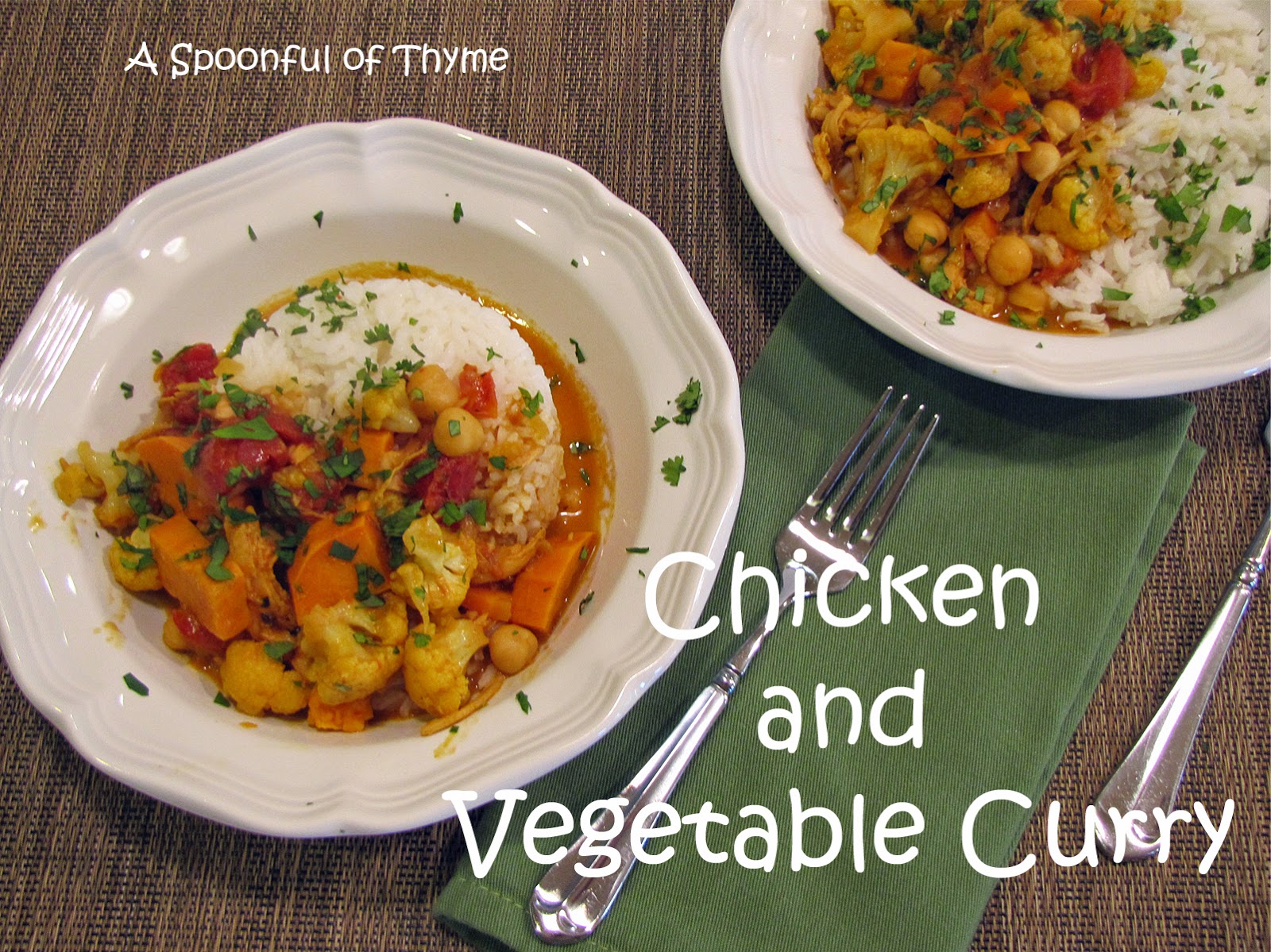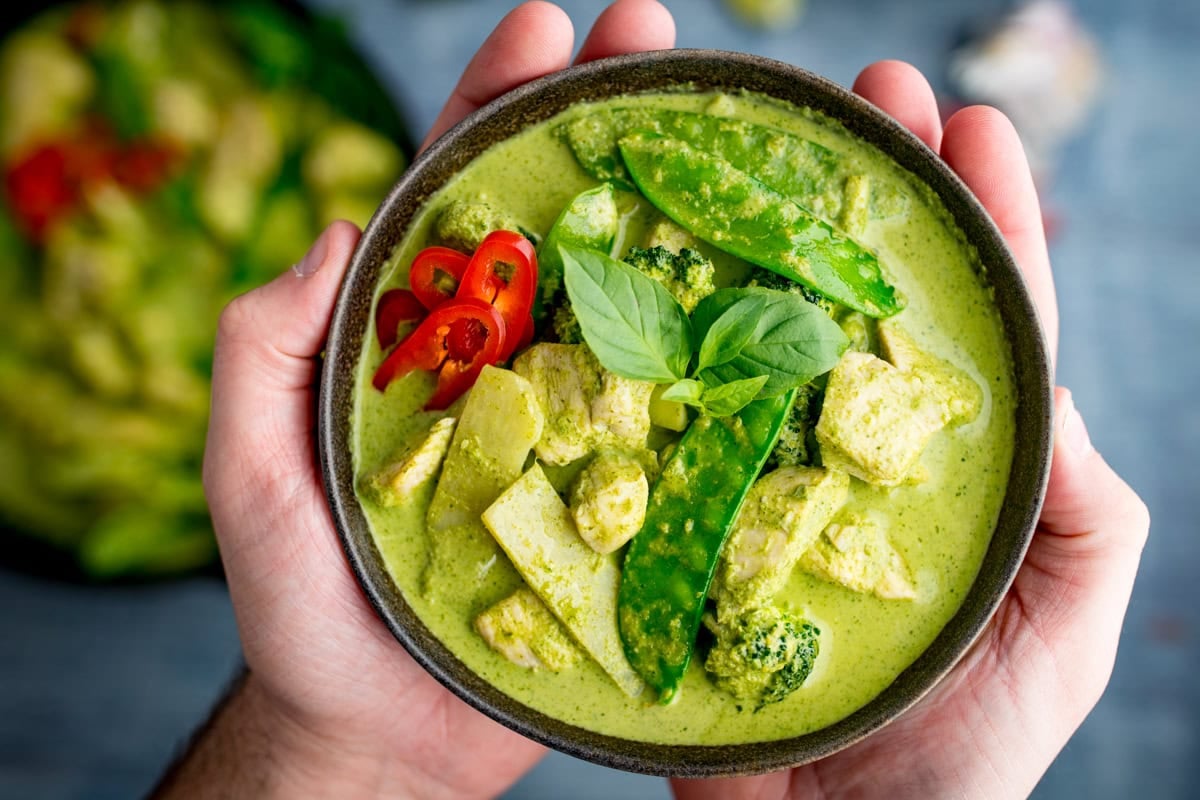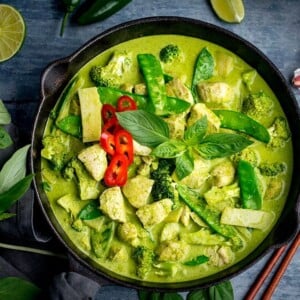Are you staring at a chicken curry recipe wondering what veggies would make it sing? You’re not alone! I’ve been experimenting with chicken curry for years, and the right vegetables can transform a good curry into an extraordinary one.
Chicken curry is one of those versatile dishes that welcomes almost any vegetable you have lurking in your fridge. Whether you’re making a creamy coconut-based curry or a spicy tomato version adding vegetables not only boosts nutrition but also creates wonderful textures and flavors that complement the spicy rich sauce.
Why Add Vegetables to Your Chicken Curry?
Before diving into our veggie list, let’s talk about why adding vegetables to chicken curry is such a fantastic idea:
- Reduces meat consumption – You can use less chicken while still creating a filling meal
- Improves nutrition – More veggies = more vitamins and minerals
- Adds interesting textures – Creates contrast to the tender chicken
- Makes meals more economical – Vegetables are typically cheaper than meat
- Enhances flavor complexity – Different veggies bring unique tastes to the curry
- Creates a one-pot meal – No need for separate side dishes
I personally love how vegetables absorb all those amazing curry spices while contributing their own subtle flavors to the dish. Plus, a colorful curry just looks more appetizing!
17 Best Vegetables for Chicken Curry
1. Potatoes
Potatoes are a curry classic for good reason. They absorb all those wonderful curry flavors while adding heartiness and substance. Russet, Yukon Gold, or sweet potatoes all work beautifully. Cut them into bite-sized pieces so they cook through properly.
2. Carrots
The bright orange hue of carrots perfectly complements the golden color of curry. They add a gentle sweetness and a nice crunch that balances the tender chicken and creamy sauce. Plus, they’re readily available year-round.
3. Bell Peppers
Bell peppers (red, yellow, green) add beautiful color and a sweet, slightly crunchy element to curry. They retain their shape well during cooking and contribute vitamin C and other nutrients. I love using different colored peppers for visual appeal!
4. Onions
Onions form the backbone of most curry dishes. Red yellow, or white onions all work well, though red onions offer a milder flavor that won’t overpower the dish. They melt into the sauce creating depth and richness.
5. Spinach
Spinach is perfect for adding green goodness to your curry without strong flavors. Simply stir it in during the last few minutes of cooking – it wilts down quickly and absorbs the curry flavors beautifully. It’s also packed with iron and vitamins!
6. Green Peas
Peas add pops of sweetness, color, and texture to curry. Frozen peas work perfectly – just add them in the last few minutes of cooking. Their bright green color makes any curry look more appetizing.
7. Cauliflower
Cauliflower florets add wonderful texture and absorb curry flavors amazingly well. They stand up to longer cooking times without falling apart and provide a nice contrast to the tender chicken.
8. Broccoli
Broccoli’s sturdy texture and ability to soak up sauce make it perfect for curry. Cut into small florets, it cooks quickly and adds vibrant green color. Its slightly bitter taste complements the rich, spicy curry sauce.
9. Green Beans
Green beans maintain a pleasant crunch even after cooking, adding textural contrast to soft chicken. They’re especially good in coconut-based curries, where their fresh flavor balances the richness.
10. Eggplant
Eggplant soaks up curry sauce like a sponge, becoming incredibly tender and flavorful. It adds a silky texture and works especially well in tomato-based curries. I find cubing and roasting it before adding gives the best texture.
11. Mushrooms
Mushrooms bring an earthy, umami quality to chicken curry. Cremini, button, or shiitake varieties all work well. They add a meaty texture that complements the chicken perfectly. Sautéing them separately before adding helps prevent them from becoming rubbery.
12. Tomatoes
Fresh tomatoes add acidity that balances the richness of curry. They break down during cooking to thicken the sauce and add natural sweetness. Cherry tomatoes can be added whole for bursts of flavor and texture.
13. Zucchini
Zucchini has a mild taste that pairs well with curry spices. Add it in the last 10-15 minutes of cooking to prevent it from becoming mushy. Sautéing it with a bit of butter or olive oil before adding enhances its natural sweetness.
14. Sweet Potatoes
Sweet potatoes add a lovely natural sweetness and beautiful orange color to curry. They balance spicier curries particularly well and offer more nutrients than regular potatoes.
15. Corn
Corn kernels add pops of sweetness and a pleasant texture to curry. Fresh or frozen both work well, and they provide nice color contrast in the dish.
16. Parsnips
Parsnips have a sweet, nutty flavor that works wonderfully in curry. They can be added along with other root vegetables and contribute both flavor and substance to the dish.
17. Leeks
Leeks offer a milder, more sophisticated onion flavor. They melt into the curry sauce, adding subtle complexity without overpowering other ingredients.
Best Vegetable Combinations for Different Curry Styles
Different curry styles call for different vegetable pairings:
For coconut milk-based curry:
- Sweet potatoes
- Bell peppers
- Green beans
- Spinach
- Cauliflower
For tomato-based spicy curry:
- Potatoes
- Cauliflower
- Bell peppers
- Eggplant
- Peas
Tips for Adding Vegetables to Chicken Curry
Here are some pro tips I’ve learned through many (sometimes failed) curry experiments:
-
Add vegetables in order of cooking time – Start with veggies that take longest to cook (potatoes, carrots) and add quick-cooking ones (spinach, peas) at the end.
-
Don’t overcrowd the pan – This lowers the temperature and prevents proper browning. Cook in batches if needed.
-
Pre-cook certain vegetables – Roasting eggplant or sautéing mushrooms before adding them to the curry enhances their flavor.
-
Keep size consistent – Cut vegetables into similar-sized pieces so they cook evenly.
-
Watch the water content – Some vegetables (like zucchini) release a lot of water when cooked. You might need to reduce your sauce a bit more.
A Simple Chicken Curry with Vegetables Recipe
Here’s my go-to chicken curry recipe that always gets compliments:
Ingredients:
- 1-1½ lbs boneless, skinless chicken breasts, cut into strips
- 2 tablespoons vegetable oil
- 1 onion, diced
- 1 red bell pepper, cut into strips
- 1 cup sliced mushrooms
- 2 cloves garlic, minced
- 2 tablespoons grated fresh ginger
- 2 tablespoons curry powder
- 1 tablespoon sugar
- Pinch of red pepper flakes (optional)
- 1 can (13.5 oz) full-fat coconut milk
- 1 cup chicken stock or water
- 1 cup snow peas
- 2-3 handfuls baby spinach
- Juice of one lime
- Salt to taste
- Rice for serving
Instructions:
-
Heat oil in a large skillet over medium heat. Season chicken with salt and brown in batches, about 5 minutes. Set aside.
-
In the same pan, sauté onion, bell pepper, and mushrooms until softened, about 5 minutes.
-
Add garlic and ginger, cooking for 30 seconds until fragrant.
-
Stir in curry powder, sugar, and red pepper flakes if using.
-
Pour in coconut milk and chicken stock, bringing to a simmer.
-
Return chicken and any juices to the pan. Simmer until chicken is cooked through, about 5 minutes.
-
Add snow peas and spinach, cooking until peas are bright green and spinach wilts, 2-3 minutes.
-
Remove from heat and stir in lime juice.
-
Serve over rice and enjoy!
Frequently Asked Questions
Can I use frozen vegetables in chicken curry?
Absolutely! Frozen vegetables are convenient and nutritious. They generally cook faster than fresh, so add them toward the end of cooking time to prevent mushiness.
How do I keep vegetables from getting mushy in curry?
Add vegetables in order of cooking time, don’t overcrowd the pot, and consider slightly undercooking them since they’ll continue cooking in the residual heat.
Can I add fruits to my chicken curry?
Yes! Fruits like pineapple, mango, or apples add delicious sweetness and tanginess that complements the savory curry flavors.
What if I don’t like a particular vegetable?
The beauty of curry is its adaptability. Skip what you don’t like and double up on what you do! There are no strict rules.
Final Thoughts
Adding vegetables to chicken curry isn’t just nutritious—it’s delicious! The way vegetables soak up those complex curry spices creates layers of flavor that make every bite interesting. Plus, a curry loaded with colorful veggies just looks more appetizing on the plate.
My personal favorite combo is bell peppers, cauliflower, and spinach in a coconut milk curry, but the beauty of this dish is how customizable it is. You can adapt it based on what’s in season, what’s in your fridge, or simply what you’re craving.
So next time you’re making chicken curry, throw in some veggies and transform a simple dish into something special. Your taste buds (and body) will thank you!
What’s your favorite vegetable to add to chicken curry? I’d love to hear your combos in the comments!

️ What to serve it with

Stay updated with new recipes!Subscribe to the newsletter to hear when I post a new recipe. I’m also on YouTube (new videos every week) and Instagram (behind-the-scenes stories & beautiful food photos).

Thai Green Chicken Curry Recipe
- ▢ 3-6 green chillies depending on how spicy you like it – you could reduce further to 1 or 2 and remove the seeds for less heat
- ▢ 6 spring onions (scallions) roughly chopped
- ▢ 2 lemongrass stalks outer leaves remove, inner stalk roughly chopped (replace with 2 tsp lemon grass paste if preferred)
- ▢ 1 thumb-sized piece ginger peeled and roughly chopped (replace with 2 tsp ginger paste if preferred)
- ▢ 4 cloves garlic peeled and roughly chopped
- ▢ 6 kaffir lime leaves
- ▢ zest and juice of 1 lime
- ▢ ½ tsp salt
- ▢ ¼ tsp white pepper
- ▢ ½ tbsp cumin
- ▢ 1 tbsp ground coriander
- ▢ 1 tsp shrimp paste
- ▢ 2 tsp fish sauce
- ▢ 1 large bunch coriander (cilantro) stalks too
- ▢ 2 tbsp olive oil
- ▢ 4 chicken breasts cut into bite-size chunks
- ▢ 4 heaped tbsp homemade Thai Green Curry Paste (see above)
- ▢ 1 chicken stock cube crumbled
- ▢ 400 ml (14 oz) tin full-fat coconut milk
- ▢ 1 bunch of broccoli broken into small florets
- ▢ 150 g (1 cup) sugar snap peas/snowpeas
- ▢ ½ cup bamboo shoots from a tin, drained
- ▢ 1 tsp light brown sugar
- ▢ boiled rice
- ▢ Thai basil leaves
- ▢ freshly chopped red chillies
- Start by making the curry paste. To a high-powered blender, add the green chillies, spring onions, lemongrass, ginger, garlic, kaffir limes leaves, zest and juice of 1 lime, salt, white pepper, cumin, ground coriander, shrimp paste, and fish sauce. Pulse until fully combined.3-6 green chillies, 6 spring onions (scallions), 2 lemongrass stalks, 1 thumb-sized piece ginger, 4 cloves garlic, 6 kaffir lime leaves, zest and juice of 1 lime, 1/2 tsp salt, 1/4 tsp white pepper, 1/2 tbsp cumin, 1 tbsp ground coriander, 1 tsp shrimp paste, 2 tsp fish sauce
- Add the large bunch of fresh coriander (stalks too) and pulse again until smooth. You might need to scrape down the sides a couple of times to ensure its fully combined. Put to one side.1 large bunch coriander (cilantro)
- Heat the oil in a large frying pan (skillet) over a medium-high heat. Add the chicken and fry for 5-6 minutes until just cooked through. Add the curry paste you made earlier – you need about 4 heaped tbsp. Stir and cook through for 2-3 minutes.2 tbsp olive oil, 4 chicken breasts, 4 heaped tbsp homemade Thai Green Curry Paste
- Sprinkle on the stock cube, stir and pour in the coconut milk. Heat through until the coconut milk is very hot but not boiling.1 chicken stock cube, 400 ml (14 oz) tin full-fat coconut milk
- Add in the broccoli, sugar snap peas (snow peas) and bamboo shoots and stir together. Heat through for a few more minutes, stirring often until the vegetables are lightly cooked, but still crisp.1 bunch of broccoli, 150 g (1 cup) sugar snap peas/snowpeas, 1/2 cup bamboo shoots
- Stir in the sugar.1 tsp light brown sugar
- Serve over rice topped with Thai basil and freshly chopped red chillies.boiled rice, Thai basil leaves, freshly chopped red chillies
